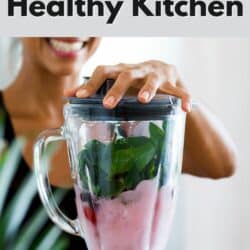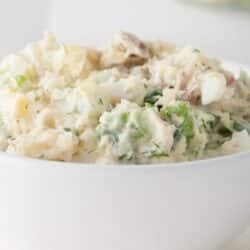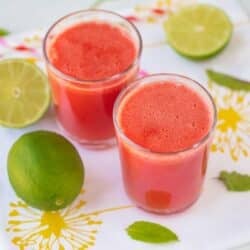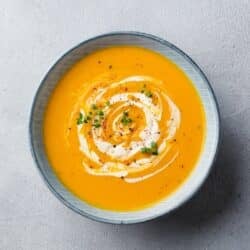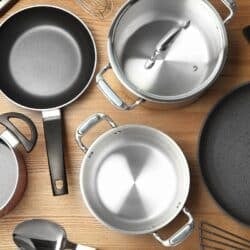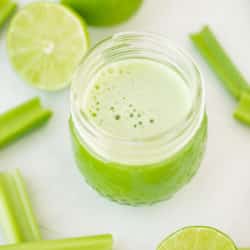15 Best Kitchen Appliances for Healthy Eating (2024)
Whether you’re new to clean eating or you’re a pro, you’ll want to make sure you have the best tools for healthy eating. In this post, I’ll share 15 best kitchen appliances for healthy and delicious cooking!
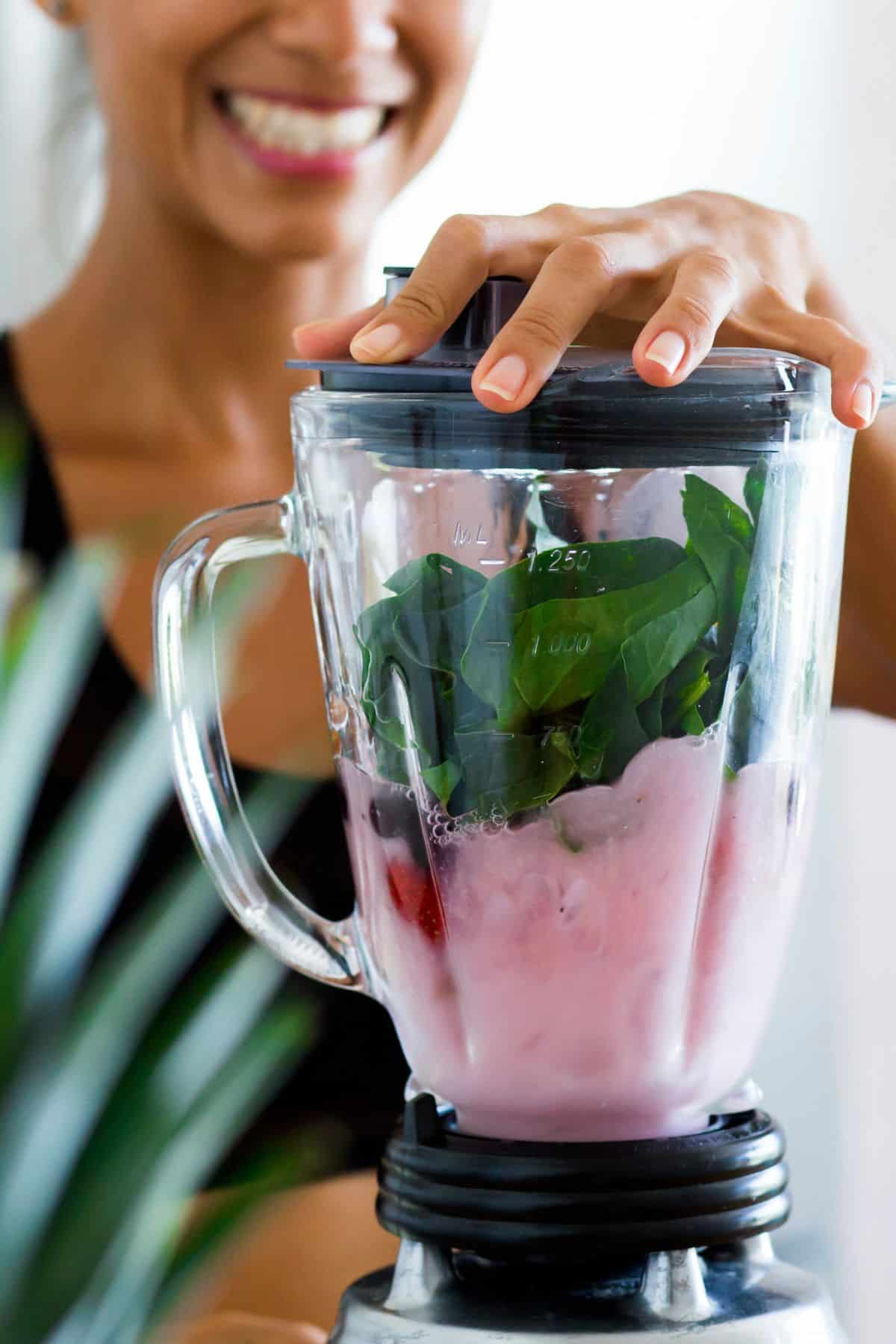
Best Kitchen Appliances for Healthy Eating
There are some basic appliances and equipment you’ll need to help you prepare delicious meals with ease.
Always remember to choose appliances for your kitchen that are easy to clean – this ensures you’ll use them more often. Also, make sure that they are suited to the size of your family.
1. Stovetop
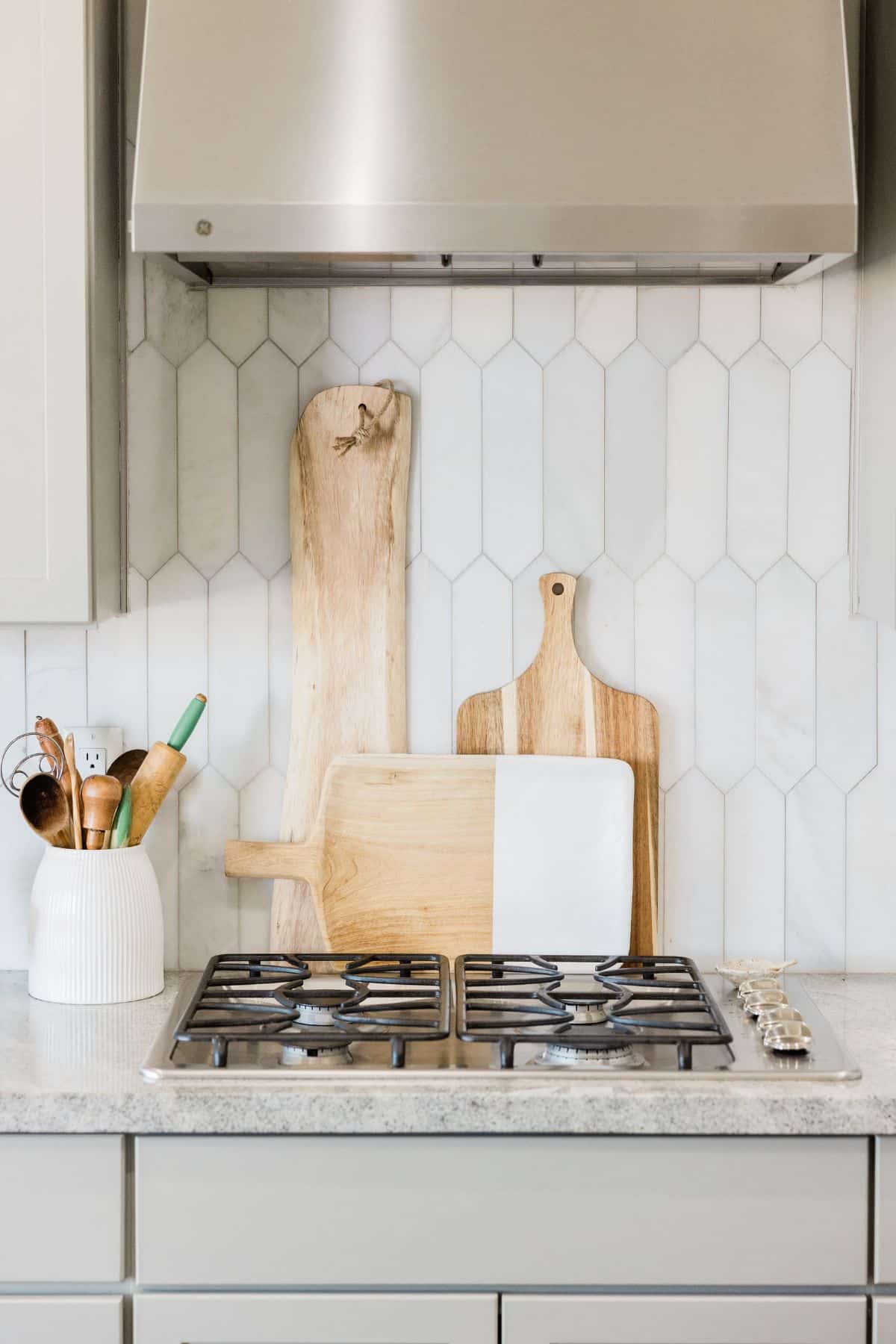
There are thousands of delicious recipes that can be easily made at home using nothing more than your stovetop. From healthy stir-fries and soups to mess-free one-skillet creations, the range of stovetop meals you can produce is endless.
There are three main types of stovetops to choose from – gas, electric, or induction.
Gas stovetops are the simplest to use since they produce instant heat that you can control quickly. This is ideal if you’re new to cooking, as it allows you to easily cook at very high or low heat. It’s also easier to prevent pots from boiling over – the minute you kill the gas, the pot stops heating up.
The main downside with gas stovetops is that they have grates and burners, so they can be harder to clean.
Electric stovetops are another popular choice. They can have solid plates, coils, or ceramic glass and use infrared technology to heat your pots. While they are more energy-efficient than gas (because the heat is concentrated in the plates or coils), they can be more difficult for novice cooks to use. This is partly because they may heat unevenly, but mainly because they heat up and cool down more slowly.
Ceramic or glass stovetops are generally easier to clean than gas cooktops, but electric coils can be a bit more challenging.
Your final option is an induction stovetop. This uses induction technology to heat up, meaning that it generates energy from an electromagnetic field under the glass surface of the stovetop. This then transfers current to magnetic pots and pans.
Induction stovetops are energy-efficient and heat quickly. They are also super safe because no heat is produced until the stovetop comes into contact with the appropriate cookware. Another bonus is that they are the easiest of the three to clean.
Note that you can use the same type of cookware for both gas and electric stovetops, but induction cooktops usually require specialty induction cookware.
See my related article on the healthiest cookware.
2. Refrigerator
Clean eating involves using fresh, healthy ingredients – so a good refrigerator to store produce, meats, dairy items, etc, is a must! It’s also invaluable for storing the leftovers from your nutritious meals to enjoy the next day.
For safety reasons, it’s important to ensure your fridge is running at the correct temperature (41°F/5°C or below). Don’t rely on the dial to tell you how cold it is – instead, invest in a mercury-free fridge thermometer and place it on the bottom shelf, just above the crisper drawer.
Here are some more tips to ensure your refrigerated food remains safe:
- Keep the fridge door closed at all times.
- Label any prepared food so you can be sure it is consumed within the appropriate amount of time.
- Cool your leftovers and store them within two hours – hot food can raise the temperature of the fridge.
- Don’t pack the fridge too full – the cool air needs to circulate inside.
- Place ready-to-eat foods on the top and middle shelves, and raw meat, fish, etc on the bottom shelf in sealed containers. This is to avoid cross-contamination.
3. Oven
Your oven is one of the most versatile appliances in your kitchen. Aside from roasting, baking, and broiling, you can even use your oven to steam foods. To do this, you can simply wrap a piece of meat, fish, or even veggies in foil or baking paper, throw in some herbs and pop the parcel into the oven to bake.
The result is perfectly cooked food with all its nutrients intact.
Using your oven is also a real time-saver. This is an important consideration because many people feel that lack of time is their biggest barrier to home cooking! Unlike more hands-on cooking methods, there’s little to do with an oven other than to place foods inside and set the temperature.
Some modern ovens even come with apps that allow you to manage them remotely. That means you can preheat your oven on the way home from work and it will be ready to go as soon as you’re home.
4. Sharp knife
Trying to create home-cooked meals without the right tools can be hard work – so be sure to equip yourself with a set of sharp knives so you can dice, slice, and chop with ease.
As an absolute minimum, you’ll need a chef’s knife and a paring knife. A chef’s knife is a good all-rounder that can be used for a variety of tasks, including chopping vegetables and slicing meat.
For more delicate cuts you need a paring knife, which is perfect for tasks like mincing garlic, peeling vegetables, and deveining shrimp.
It’s worth investing in good quality knives. These are more likely to start sharp and stay sharp, meaning you’ll be able to control them better and reduce the risk of accidentally cutting your fingers. They also cut cleanly, giving more aesthetically pleasing results.
The good news is that there are a variety of knives and knife sets that are available to meet all budgets. Try this self-sharpening budget-friendly knife set, or go high-end with this pro-level chef’s knife.
And, at the risk of repeating myself, try to buy quality sharp knives and keep them sharp with a knife sharpener. You are less likely to cut yourself with a sharp knife than a dull one.
5. Quality cookware
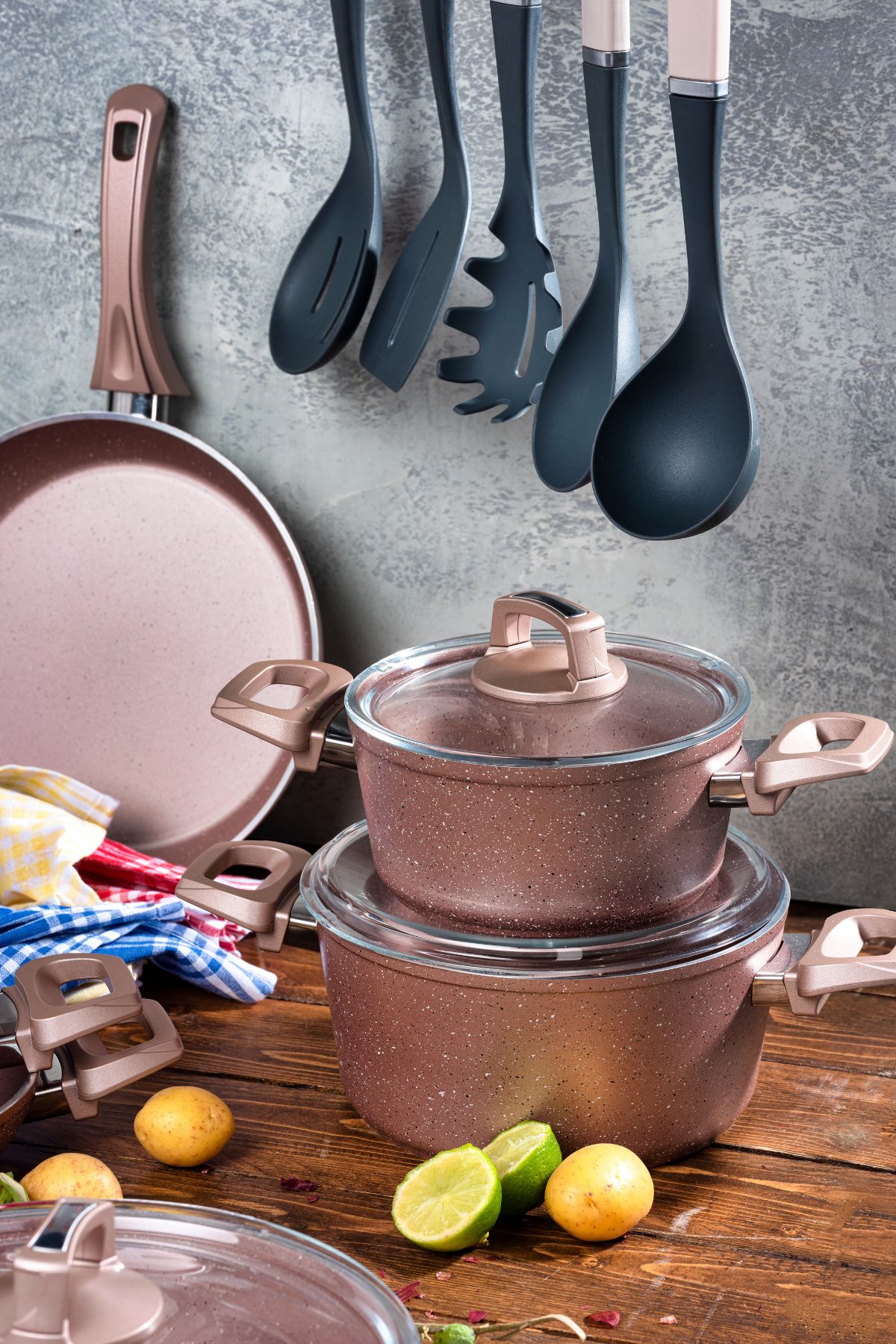
Certain pieces of cookware are essential when it comes to getting healthy meals on the table.
- A cast iron skillet – you can use this on the stovetop or in the oven. Look for a heavy pan (which will distribute heat evenly) and use it for everything from sauteing to searing. Cast iron skillets are fairly non-stick, too, although they do require special oiling and upkeep. I like this Lodge bundle.
- Ceramic-coated non-stick skillet – this is ideal for eggs or breaded foods and allows you to cook with less fat. I like the Greenpan brand.
- Sauté pan – choose one with straight sides and you can use it for tossing pasta, stir-fries, and healthy one-pot meals.
- Dutch oven – this thick-walled pot with a lid can be used on the stovetop or in the oven. It’s ideal for making stews, soups, casseroles, stock, and lots more. You can even use it to make bread.
- Baking sheet – buy a large sheet and you can use it for all types of savory cooking, from cooking a whole chicken to producing a nutritious one-pan sheet meal.
- Saucepan – you’ll use this for boiling, simmering, steaming, making sauces, and lots more! Alternatively, consider a saucier, which does a similar job but has a rounder shape that many find easier to use and clean. A stainless steel saucepan is a great choice.
When choosing non-stick cookware for your kitchen, ensure that the coating is free from toxic chemicals. For specific brands and more info on the safest cooking material, see my article on the safest cookware.
6. High-speed blender
A high-speed blender is a versatile tool that can turn tough, stringy foods and fibrous vegetables into smooth purees. It can also crush ice in seconds. This makes it useful for creating delicious soups, sauces, dips, nut milk, and nutrient-packed smoothies. I have a ton of healthy smoothie recipes to inspire your healthy kitchen.
High-speed blenders have very powerful motors and the blades move so quickly that they warm up significantly. This means that many models are capable of heating your ingredients as well as blending them.
I have a Vitamix Explorian that I highly recommend. You can use it to make amazing recipes such as Vitamix Ice Cream, Vitamix Orange Juice, Vitamix Sorbet, Vitamix Tomato Soup, or Vitamix Green Juice.
7. Cutting board
Cooking at home requires quite a bit of slicing, dicing, and chopping, so a high-quality cutting board is essential.
In fact, you should buy two – one for your produce, and one for foods like meat and fish. This is to eliminate any risk of cross-contamination.A useful tip is to choose boards with different colors, which will make it easy to tell them apart.
There is a lot of debate about the material that chopping boards should be made from – plastic or wood. Wood is harder to clean, but it is much kinder to your knives than plastic. Whichever type you go for, remember to scrub your boards thoroughly after every use and store them upright so they stay dry and bacteria-free.
I like this Bamboo cutting board.
8. Food storage containers
One of the great things about cooking your own meals is that you often have leftovers. That means you’re guaranteed a healthy lunch for the next day, too.
But it is important to store and transport that leftover food safely and for this, you’ll need some good quality food storage containers. I like these glass storage containers that have lockable lids. They are spill-proof and easy to clean.
See more of my meal prepping tips for beginners.
Bonus recommendations
The above appliances are great for anyone new to cooking or if you’re setting up your kitchen for the first time. Here are some additional appliances that can take your healthy cooking to the next level.
9. Air fryer
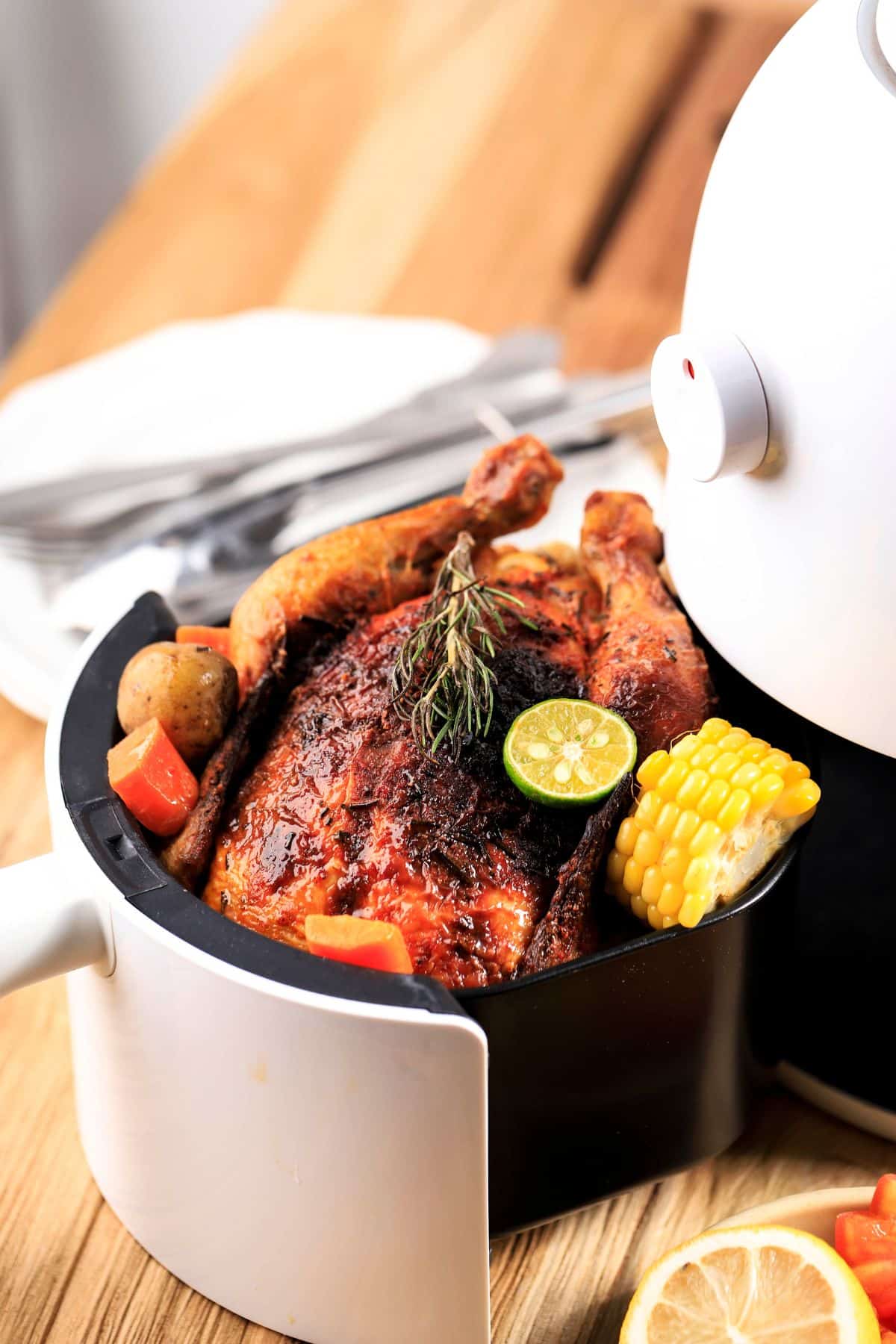
Air fryers have been around for over a decade but in the last couple of years, their popularity has soared.
And there are good reasons for that.
- Using an air fryer helps you cook with less oil, so the meals you make are healthier.
- Air-fried foods have a great texture and are just as crisp and crunchy as those that have been deep-fried.
- The air-fryer is very easy to use… and to clean!
- It’s a great way to heat up leftovers without ruining their texture.
- Using an air fryer is quicker – and cheaper – than heating an oven, especially for smaller quantities.
Air fryer appliances range from the basic to the sophisticated, with some models incorporating other functions like baking and dehydrating.
Learn more about the pros and cons of air frying. And, as far as which air fryer to buy, I like this Cosori air fryer! Or, see my full list of the best air fryers under $100.
10. Pressure cooker
Pressure cookers are very versatile – you can use one to cook a whole chicken in record time, prepare a batch of perfectly fluffy rice, or even produce homemade yogurt. They are also great for making deliciously tender meals from very cheap cuts of meat.
They work by trapping the steam produced by their contents as they heat, resulting in those foods cooking far more quickly than they would by any other method.
And as a real bonus in today’s busy world, you can use ingredients straight from the freezer.
And because they cook so quickly, foods retain their nutrients, resulting in healthier meals for you and your family.
In the past, pressure cookers were somewhat intimidating for the home chef and had a reputation for being unsafe. But all that has changed and today’s models boast a range of safety features, including overheat protection, pressure release valves, locks, and more.
As with air fryers, multipurpose pressure cookers are available, many featuring slow cooking functions and the ability to saute food. This is very convenient, as it allows you to prepare a meal in one pot.
I recommend the 6-quart Instant Pot Duo (see my related guide on How to Use the Instant Pot Duo for Beginners).
11. Slow cooker
After a long day at work, there is nothing quite as comforting as coming home to a delicious hot meal.
And that’s what you get with a slow cooker, an appliance you load with ingredients before leaving the house and leave to cook throughout the day. This “set it and forget it” style of cooking is convenient and healthy, as it helps preserve the nutrients in the food.
A slow cooker is also energy efficient and saves you money in other ways, too. Because of the extended cooking times involved, you can use ingredients like dried beans in your recipes, which are cheaper (and often healthier) than the canned varieties.
Ideally, look for a model that will switch to a low-heat setting when the food is cooked. This will keep it warm until you and other family members are ready to eat it.
I like this 8-quart slow cooker the most.
12. Food processor
A food processor is a versatile tool designed to make your life a whole lot easier.
Capable of whisking, slicing, chopping, shredding, blending, and more it will get all your prep work done in a fraction of the time, allowing you to create healthy meals far more quickly. You can also use a food processor to create homemade alternatives to store-bought sauces, salad dressing, and even nut butter.
Considering that few of us enjoy preparing the ingredients for a meal, having a food processor makes cooking a lot more fun. I have a Breville Sous Chef which I absolutely love, but even a basic Cuisinart food processor comes in very handy and is a bargain.
13. Mixer or hand mixer
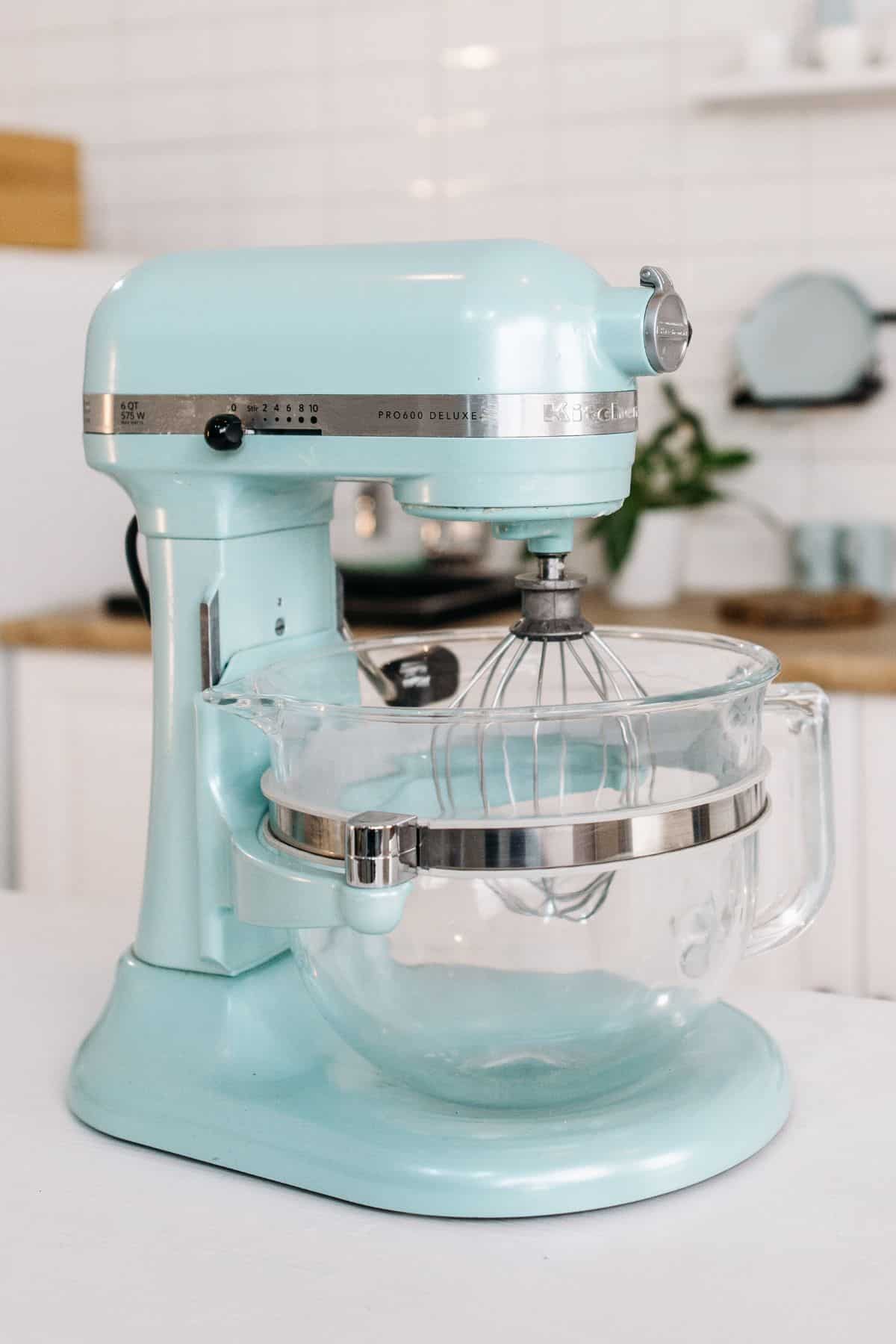
Another appliance designed to take the hard work out of food prep, a mixer is a baker’s best friend! Kneading, whisking, and beating ingredients all require quite a bit of elbow grease, but a mixer takes it all on for you and frees you up for other tasks.
There are two types of mixers available – stand mixers and hand mixers.
Stand mixers are robust and durable, designed for long mixing times and heavy, large mixtures. A Kitchen Aid stand mixer is iconic and classic. You’ll use it for a lifetime and pass it onto the next generation.
Hand mixers are better for lighter tasks like whisking up salad dressings or mixing scrambled eggs. Kitchen Aid also makes a great hand mixer that is reasonably priced.
14. Hand-immersion blender
Saving time in the kitchen is always a good thing and an immersion blender cuts down on clean-up. That’s because it makes it possible to blend and puree ingredients right in the pot you cooked them in.
Ideal for creating nutritious soups, sauces, and creamy vegetable dishes, using an immersion blender also means you don’t have to wait for foods to cool before blending them.
Try this Kitchen Aid hand immersion blender to complement your mixer!
15. Food steamer
Steaming vegetables is a great way to prepare them as opposed to frying or roasting them. A quality food steamer will come in stainless steel and can be used on the stovetop.
You can also invest in a stand-alone food steamer if you plan to use it a lot and have room on your countertop. I like this Cuisinart digital food steamer.
Otherwise, a steamer basket is a good budget purchase.
Bonus: Additional appliances
The list can go on and on in terms of appliances that can help make healthy cooking easier and more efficient. You can also consider items such as a rice cooker, juicer, food dehydrator, and others.
But, I tried to limit my favorite appliances to the top 15 seen above.
My last piece of advice on specifically what to purchase would be to try to start with just the basics and then go from there. If you are new to cooking, you don’t want to overwhelm yourself with too many gadgets.
Buy the highest quality items you can to get started, and then grow into your needs as you get more confident and accomplished in the kitchen.
Benefits of Cooking at Home
Cooking at home is better for you and your family in many ways. Some benefits are obvious, but there are others that you may never have considered before.
You tend to consume fewer calories
Pre-packaged, processed foods are often very high in calories. The same goes for restaurant meals, which are often loaded with fats and served in super-sized portions.
When you cook your own meals, you’re much more aware of what goes into them. Cooking at home means that you can use quality ingredients as opposed to vegetable oils and non-organic produce.
Indeed, experts have found that eating home-cooked meals on a regular basis reduces the risk of obesity and is associated with better dietary quality.
Your meals are more nutritious
Reducing your calorie intake is good – but it’s also important to think about the quality of the calories you consume.
For example, there are around 200 calories in a couple of ounces of jelly beans. There are also 200 calories in well over a pound of broccoli – along with a vast array of nutrients – making those calories a lot more valuable.
Avoiding processed foods also means cutting out harmful additives and helps keep our sodium intake under control.
When you cook your own meals, you are much more likely to opt for nutritious ingredients – so not only are you at a reduced risk of obesity, but your overall health improves, too.
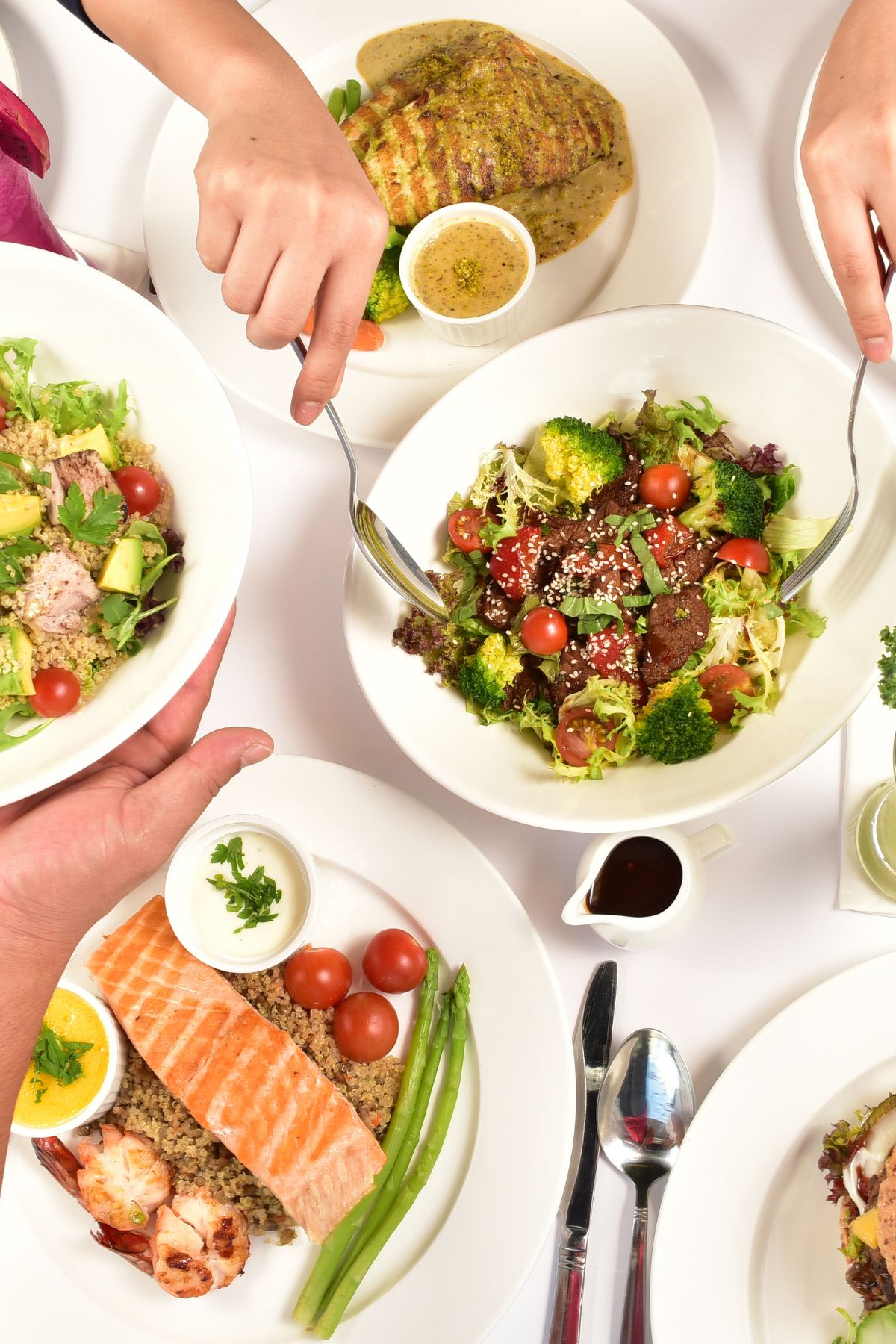
Homemade food tastes better!
Manufacturers load processed foods with salt and sugar to make them more attractive to us – but do they really taste that great?
Once you start cooking whole and healthy ingredients at home, you’ll find their natural flavors really shine through and you’ll begin to enjoy your meals in a whole new way.
You – and your family – begin to practice mindful eating
How often do we really sit and savor processed meals? The truth is, we don’t. Processed food is designed for busy lifestyles and most of us eat it quickly, with little thought.
Home-cooked meals, on the other hand, encourage us to appreciate the time and ingredients that have gone into them. This results in greater enjoyment of the meal and a healthier relationship with food.
It saves money
There’s a persistent myth that cooking fresh, healthy foods is expensive. But this couldn’t be further from the truth.
Creating meals from scratch often works out to be less expensive than buying pre-packed food – and far cheaper than eating out.
And, if you grow your own ingredients, cooking at home becomes even cheaper.
You’re in control
If you suffer from any kind of allergy or food sensitivity then you’ll know just how challenging it can be to avoid the ingredients that cause a reaction. But when you cook your own food, you know exactly what’s in each meal.
You can also ensure that any less-than-healthy ingredients are kept to a minimum and that your portion sizes are appropriate.
It brings the family together
Whether it’s eating a homemade meal together – or even working as a team to prepare it – cooking at home is a great family bonding activity.
There’s something special about having meals that become “family favorites”, particularly when those healthy recipes are passed from one generation to the next.
Cooking is a great activity for couples, too, or a fun way to spend an evening with friends.
Cooking at home is good for your mental health
Cooking helps relieve stress at the end of a busy day and it’s a good way to nurture your creativity.
The social aspect of sharing that home-cooked meal is also great for relieving depression. It’s very rewarding to see the happiness that a lovingly prepared meal can bring to others.
FAQs About Healthy Cooking Appliances
Here are some common mistakes to avoid when using appliances to cook healthy meals:
Overcooking: Overcooking can cause nutrients to be lost and can result in dry, overcooked food. Be sure to follow the recommended cooking times for your appliance.
Using too much oil or fat: Use as little oil or fat as possible when cooking with appliances. Non-stick surfaces can help reduce the need for extra oil or fat.
Not cleaning your appliance properly: Be sure to clean your appliance regularly to ensure that it is in good working order and to avoid the buildup of bacteria or other contaminants.
Not following the recommended cooking times: Be sure to follow the recommended cooking times for your appliance to ensure that your food is cooked properly.
For small kitchens, consider multipurpose appliances like a blender that can also work as a food processor, or an Instant Pot, which can serve as a pressure cooker, slow cooker, rice cooker, and more. Also, consider a compact air fryer or a handheld immersion blender which takes up less space.
More Healthy Cooking Resources You Might Like
Conclusions
Cooking your own delicious and nutritious meals is a lot easier than you might think. I hope you’ve found this article helpful in choosing the best appliances for your clean-eating kitchen and that you and your family enjoy the benefits of your home-cooked creations.
Don’t forget to join my newsletter list to get exclusive clean eating recipes and tips. The newsletter is 100% free with no spam; unsubscribe anytime.
About the Author: Carrie Forrest has a master’s degree in public health with a specialty in nutrition. She is a top wellness and food blogger with over 5 million annual visitors to her site. Carrie has an incredible story of recovery from chronic illness and is passionate about helping other women transform their health. Send Carrie a message through her contact form.
Note: this post is for informational purposes only and is not intended as medical advice. Please consult your healthcare provider for recommendations related to your individual situation.


